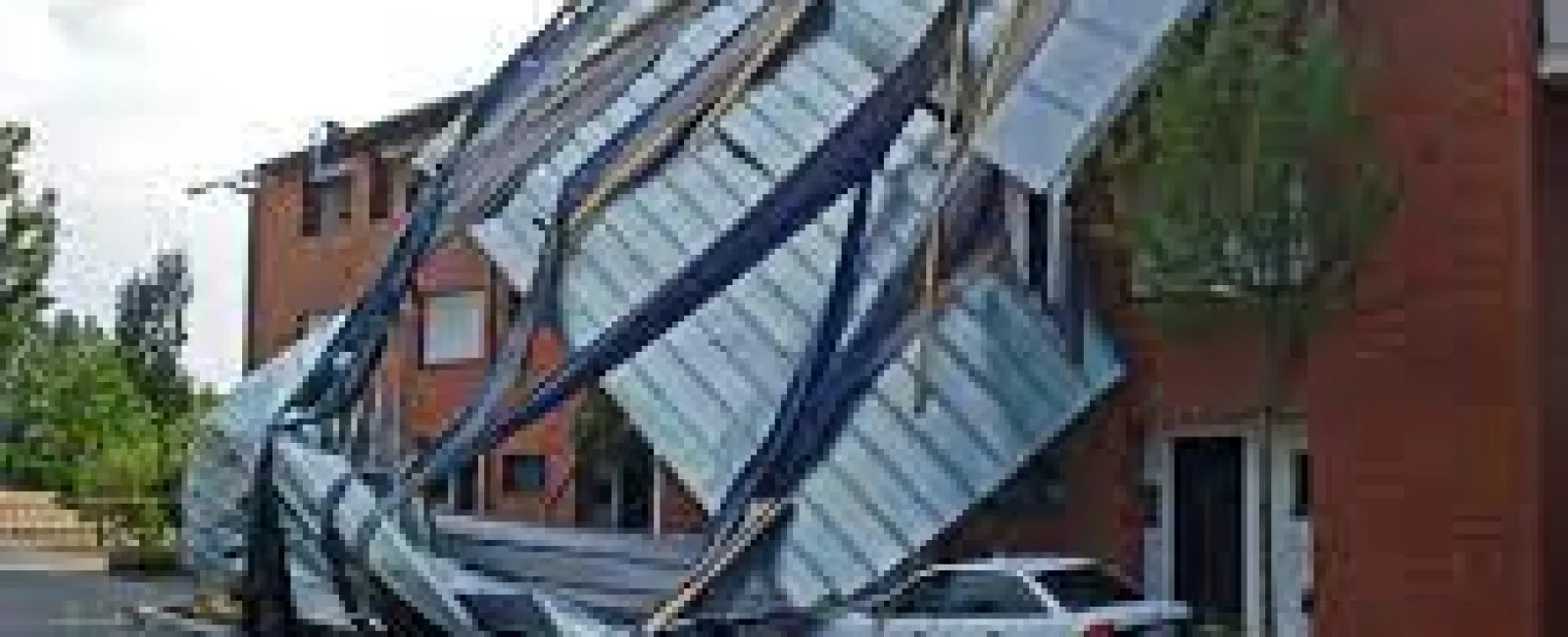For
homeowners, a storm can bring many concerns, from power outages to
water damage. One of the most significant worries is the potential
for roof
damage
and the costly repairs that come with it. Detecting storm damage on
your roof early is essential to minimize the impact on your home and
prevent further problems. However, identifying the signs of storm
damage may not always be straightforward, especially for those
unfamiliar with roofing systems and potential issues. Here are a few
things to keep an eye out for when evaluating signs of storm damage
on your roof, as well as when it’s time to schedule a professional
roof inspection to maintain the integrity of your home.
Visible
Damage from the Ground:
An easy way to check for storm damage is to inspect your roof from
the ground, looking for obvious signs of damage:
-
Missing
or damaged shingles -
Curling
or buckling shingles -
Debris
on the roof. -
Damaged
or exposed flashing -
Any
sagging areas -
Damaged
soffits or fascia
Check
Gutters and Downspouts:
Gutters and downspouts can also provide clues about possible roof
damage. Inspect them for:
-
Granules
from shingles: Excessive granules in gutters indicate that your
shingles deteriorate due to storm damage. -
Dents
or other damage: Hailstorms can dent gutters and downspouts, hinting
at potential roof damage.
Inspect
the Attic for Leaks:
After
a storm, inspect your attic for signs of leaks, such as water stains,
damp insulation, or mold. Even small leaks can lead to significant
water damage if left unaddressed, so it’s crucial to catch them
early.
Look
for Interior Water Damage:
Water damage inside your home can also indicate a damaged roof. Check
your ceilings and walls for water stains, peeling paint, or bubbling
wallpaper. Please contact us if you notice any of these signs. A
professional to assess the situation and determine the cause of the
damage.
When
to Schedule a Roof Inspection:
Regular
roof inspections
are crucial, especially before and after winter, to ensure your roof
is prepared for harsh weather conditions. Timely inspections can help
identify potential issues exacerbated by storms or freezing
temperatures, enabling you to address them before they lead to more
significant problems.
However,
it’s especially important to have your roof inspected as soon as
possible after a severe weather event. While you can check for signs
of storm damage, some issues may not be visible from the ground or
inside your home.
Roof
inspections
performed by professional contractors are essential in identifying
and addressing roof damage before it becomes a more significant
problem. Contractors can access tools and techniques, like thermal
imaging and drone inspections, to help identify hidden damage or
leaks and thoroughly assess your roof’s condition. During roof
inspections,
a contractor will:
-
Look
for missing or damaged shingles on your roof, leaks and other
issues. -
Check
the condition of your roofing materials, such as the underlayment
and flashing, to ensure they still function properly. -
Inspect
the roof’s ventilation and insulation systems for signs of damage or
inefficiencies. -
Use
thermal imaging to detect heat loss or moisture issues that may
indicate damage beneath the surface. -
Employ
drone inspections to access hard-to-reach areas and obtain a
comprehensive view of your roof’s condition.
If
your roof has sustained storm damage, the next step is to contact
your insurance company and file a claim. Many homeowners insurance
policies cover storm damage, but it’s essential to document with
photos and videos the damage found.
Our
Best Advice
Early
detection of storm damage on your roof is vital for safeguarding your
home against further complications and costly repairs. Remember to
schedule regular inspections and prioritize them after severe weather
events to ensure the longevity and safety of your roof.
If
you suspect any damage, contact
our team
today for expert advice, prompt service, and, most importantly, peace
of mind for you and your family, knowing your home will be repaired
and well-protected for future weather conditions.



